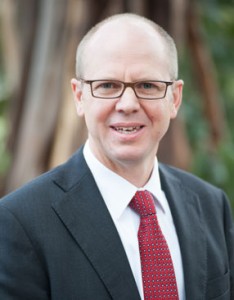Ross Hampton, Chief Executive Officer Australian Forest Products Association is relaying a simple message the scientists advising the climate change talks in Paris would have for those interested in forestry operations in Australia: “If you really care about the climate – back forestry”. Source: Timberbiz
The Intergovernmental Panel on Climate Change (IPCC), the grouping of hundreds of scientists who provide the highest level advice to Governments, spelt it out in their 4th Assessment.
They said: “A sustainable forest management strategy aimed at maintaining or increasing forest carbon stocks, while producing an annual sustained yield of timber, fibre or energy from the forest, will generate the largest sustained mitigation benefit.”
So that’s the inconvenient truth for those not yet fans of state-based sustainable natural forest operations.
The forestry challenge discussed in Paris is all about stopping deforestation not forestry. According to Ross Hampton, he would be happy to join those marching to demand that we halt the wholesale clearing of forests in less regulated countries for illegal timber or the massive burning which we see every year as more jungle is cleared for other crops.
These activities are enormous contributors to global greenhouse emissions.
According to the UN, some 12 million hectares of forest is destroyed each year in this way – responsible for roughly 11% of global greenhouse gas emissions.
But the key thing to understand is this is not happening in Australia.
Forestry certification schemes are a shorthand way to prove that.
Here we have two globally recognised schemes; the Forest Stewardship Council (FSC) and Australian Forestry Standard (AFS that sits under the PEFC umbrella).
You can’t get either of these onerous ticks if you are not operating in a sustainable manner – that is replanting or resowing after you harvest at a minimum.
All major forestry operators in Australia have one or both of these certifications while 90% of the world’s forests have neither.
Across Australia we plant some 40 million seedlings each and every winter in our plantations and, when it comes to the native forestry sector, the resowing adds another 20 odd million young trees to that tally.
Mr Hampton said that research shows that for Australians this is the key message that matters. The question they have is do you replant as well as harvest? The answer is yes.
The World Wide Fund for Nature (WWF) issued a worldwide call to arms recently in the form of the “triple-planet crisis” that it says is coming at us like a train.
WWF has done the math and says, based on the current scale of the use of resources, by the time we get to 2050 and we will be trying to house, feed and clothe 9.5 billion people and we would need three planets worth of inputs.
One of the answers is to focus more on delivering our necessities of life from renewable stocks while taking care to not push so far that they are not sustainable.
Working forests are the life-saver of our generation in this regard.
Not only are we able to turn back to traditional timber as a primary building stock but the whole world of the bio-economy in fuels, plastics, solvents, chemicals and more is providing a renewable alternative to fossil fuel based products.
Finally, there are social and environmental goods that come from forestry. These managed forests are great for recreation and tourism. And because they are looked after by forestry fire crews, who have access through well maintained fire trails, our health and safety is far more assured than would otherwise be the case.
We should be incredibly proud of our forestry operations in Australia. Done well, they are a vital part of our shared future and an inspirational success story to the global leaders in Paris who have few such unambiguous win/wins to hand.








